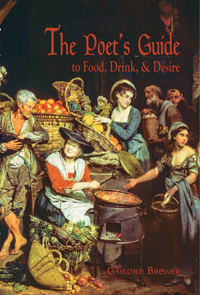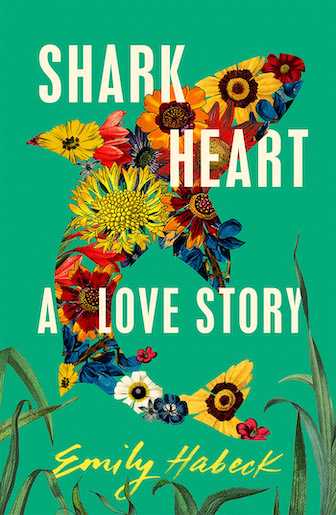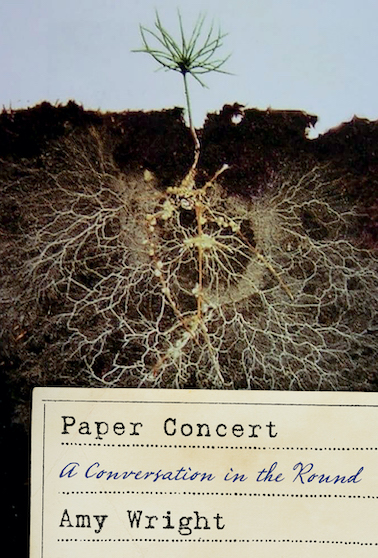A Cookbook, of Sorts
Murfreesboro poet Gaylord Brewer whisks together recipe, memoir, and verse
With a subtitle—a “A Cookbook-Memoir, of Sorts”—Murfreesboro poet Gaylord Brewer acknowledges that The Poet’s Guide to Food, Drink, & Desire resists easy categorization. And the “of sorts” quality is exactly what makes this collection of essays and recipes a must-read for home cooks who sometimes fancy themselves chefs who happen to have been spared the nuisance of a restaurant.
 In this wonderful mishmash of a book, readers enjoy not only Brewer-original recipes but also Brewer-original lines of poetry, reveries of that first bite of a special dish, and hearty opinions on all things involving food—and life. Titles like “Don’t Try This at Home,” “Buttermilk as a Lifestyle Choice,” and “Later in the Evening; or On Ecstasies, Agonies, & Might Have Beens” are a good indication of what readers are in for. The book begins with three different chapters on duck and then moves on to the glories of a deep fryer, risotto, rabbit (the other underappreciated meat), grilling, blood sausages, some more duck in the form of Foie Gras (the man likes his duck), two chapters on vegetables and non-fried snacks to keep that heart attack at bay, and desserts tailored to the seasons—plus a crash course in proper drink-making and bar-keeping. The recipes are a mix, from the deliciously simple deep-fried olives to the ambitious daring of grilled mussels.
In this wonderful mishmash of a book, readers enjoy not only Brewer-original recipes but also Brewer-original lines of poetry, reveries of that first bite of a special dish, and hearty opinions on all things involving food—and life. Titles like “Don’t Try This at Home,” “Buttermilk as a Lifestyle Choice,” and “Later in the Evening; or On Ecstasies, Agonies, & Might Have Beens” are a good indication of what readers are in for. The book begins with three different chapters on duck and then moves on to the glories of a deep fryer, risotto, rabbit (the other underappreciated meat), grilling, blood sausages, some more duck in the form of Foie Gras (the man likes his duck), two chapters on vegetables and non-fried snacks to keep that heart attack at bay, and desserts tailored to the seasons—plus a crash course in proper drink-making and bar-keeping. The recipes are a mix, from the deliciously simple deep-fried olives to the ambitious daring of grilled mussels.
Clearly this is not just another cookbook. The recipes are uncommon (many emerging from Brewer’s travels with famous chefs in France and Spain), and their presentation is literary in a way that only a gifted poet can be. Instead of giving us a celebrity chef’s kitchen with pristine glass ramekins containing pre-measured ingredients, Brewer lets us see the real kitchen, one where a duck has a blow dryer aimed on its arse to speed up the drying process.
 M.L. Rosenthal once called Robert Lowell’s Life Studies “a series of personal confidences, rather shameful, that one is honor-bound not to reveal.” In much the same way, The Poet’s Guide to Food, Drink, & Desire feels like a gastronomical series of confidences revealed. When explaining how to make risotto, Brewer also includes instructions for how to endure the bore of making risotto. (Answer: a martini.) If a recipe involves a controversial ingredient like caviar, he engages the discussion and admits his own inconsistencies and guilt: “I vividly remember standing in my dingy St. Petersburg dorm room, devouring eggs with plastic spoons and washing them down with a bottle of cold vodka—which bore a bear on the label, or maybe a Viking or a red hammer….” At other moments he removes the mask by openly admitting which recipe in a particular chapter he loves best (Bone Marrow & Truffle Rissotto, for example) and then acknowledging that the other recipe (Scallop and Corn Risotto), while “not as holy,” is a cheaper and healthier alternative.
M.L. Rosenthal once called Robert Lowell’s Life Studies “a series of personal confidences, rather shameful, that one is honor-bound not to reveal.” In much the same way, The Poet’s Guide to Food, Drink, & Desire feels like a gastronomical series of confidences revealed. When explaining how to make risotto, Brewer also includes instructions for how to endure the bore of making risotto. (Answer: a martini.) If a recipe involves a controversial ingredient like caviar, he engages the discussion and admits his own inconsistencies and guilt: “I vividly remember standing in my dingy St. Petersburg dorm room, devouring eggs with plastic spoons and washing them down with a bottle of cold vodka—which bore a bear on the label, or maybe a Viking or a red hammer….” At other moments he removes the mask by openly admitting which recipe in a particular chapter he loves best (Bone Marrow & Truffle Rissotto, for example) and then acknowledging that the other recipe (Scallop and Corn Risotto), while “not as holy,” is a cheaper and healthier alternative.
Some chapters feature a bit more memoir than others. There’s “Blood Sausage and the Rudiments of Love,” for instance, and “On Morel Mushroom Farming & the Agrarian Impulse.” The outstanding chapter on fried chicken, “a serious topic” in the United States, seamlessly merges memory and meals. Amid the recipes for Buttermilk-Battered Fried Chicken (and, of course, the buttermilk had better not be low-fat) or Sweet Tea-Brined Fried Chicken, there are memories of driving back to college with Grandma Brewer’s cold chicken on the seat beside him. Also nestled within this batch of recipes are Grandma Brewer’s indictments against her daughter-in-law for turning chicken pieces to death and other such sins. What is clear in this collection is how often our attempts at honoring the past work their way into our own kitchens.
Of course, what sort of reviewer would I be if I did not try at least one recipe? I decided to go big: the Buttermilk Coconut Almond Pie with Sea Salt Bourbon-Caramel Sauce. This recipe would adhere to my first dietary principle (avoid processed food) but not my second (cut down on anything white, i.e. rice, potatoes, bread, and sugar.) It did, however, embody my third principle, one that Brewer shares: decadence can be necessary at times—and that makes it healthy in its own way.
So I dutifully opened a bottle of wine—again channeling my inner Gaylord Brewer—and got to work. Cooking instructions are written in the conversational style of the essayistic parts of the book, which made it feel as if the author were in the kitchen with me. And the result was divine: the pie fluffy and not overly sweet, but complicated by the sour of the buttermilk and the salt of the almonds. I worried that the bourbon sauce wouldn’t set right or be reduced to hard crystals within a day, but that didn’t happen. I did notice, though, one slight drawback to the eloquent, loquacious manner of the book: I had to flip back and forth between the ingredient list and the instructions, a span of three pages. So I counted that little finger leap as my exercise for the day.
One of the many delights of this book is the full-on knife-throwing advice. On home winemaking: “Don’t. Just don’t.” On dirty martinis: “If a guest (invariably a young guest) asks for or even insinuates such a thing, simply and politely pretend not to have heard.” On sweetbreads: avoid ordering if they’ve been “smothered and covered beyond recognition in some overbearing blah-blah-blah-chile-diablo reduction or similar pretension.” On kitchen equipment: “The well maintained deep fryer… nicely polished, its oil clear and clean, indicates a dedicated cook and entertainer, a fine citizen of the world with a balanced disposition and a pure heart.” Finally, perhaps his best piece of advice: “Try to enjoy the moment. It’s all we have.”

Charlotte Pence’s collection, Many Small Fires, was recently released by Black Lawrence Press, and her poems are forthcoming from The Southern Review, Epoch, and Harvard Review , among others. A Ph.D. graduate of the University of Tennessee in Knoxville, she is an assistant professor of English at Eastern Illinois University.


